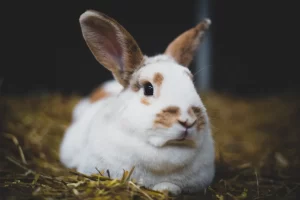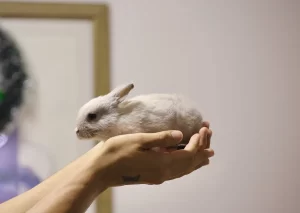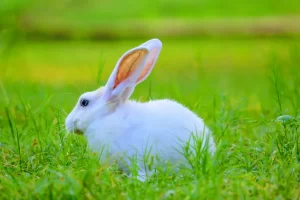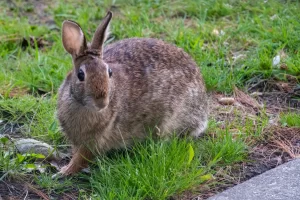Are you curious about whether rabbits are part of the rodent family? Well, you’ve come to the right place! In this article, we will explore the taxonomy, physical characteristics, similarities, and differences between rabbits and rodents.
By examining their evolutionary relationships and classification, we will provide you with an evidence-based answer to this intriguing question.
So, let’s dive into the world of rabbits and rodents and uncover the truth together!
In This Article
- 1 Key Takeaways
- 2 The Taxonomy of Rabbits and Rodents
- 3 Physical Characteristics of Rabbits and Rodents
- 4 Similarities Between Rabbits and Rodents
- 5 Differences Between Rabbits and Rodents
- 6 Evolutionary Relationships of Rabbits and Rodents
- 7 The Classification of Rabbits and Rodents
- 8 Frequently Asked Questions
- 8.1 How Do Rabbits and Rodents Differ in Terms of Their Reproductive Habits?
- 8.2 Are There Any Species of Rabbits That Exhibit Rodent-Like Behaviors?
- 8.3 Are There Any Health Risks Associated With Keeping Rabbits and Rodents as Pets?
- 8.4 Can Rabbits and Rodents Interbreed to Produce Hybrid Offspring?
- 8.5 What Are Some Common Misconceptions About Rabbits and Rodents That People Often Have?
- 9 Conclusion
Key Takeaways
- Rabbits and rodents belong to different taxonomic families, with rabbits classified under the family Leporidae and rodents classified under the family Rodentia.
- Rabbits belong to the order Lagomorpha, while rodents belong to the order Rodentia.
- Rabbits have long, upright ears and two pairs of incisors, while rodents typically have shorter, rounded ears and a single pair of large, continuously growing incisors.
- Despite some similarities in their herbivorous diet and habitat preferences, rabbits and rodents have distinct taxonomic classifications and different physical characteristics.
The Taxonomy of Rabbits and Rodents
Do you know the preposition used in the taxonomy of rabbits and rodents?
Despite common misconceptions, rabbits and rodents belong to different taxonomic families. Rabbits are classified under the family Leporidae, while rodents are classified under the family Rodentia.
The taxonomy of rabbits and rodents is based on scientific evidence and objective observations. It’s important to understand this classification to dispel any misconceptions about the relationship between rabbits and rodents.
Rabbits are characterized by their long ears, hopping locomotion, and herbivorous diet. On the other hand, rodents are characterized by their gnawing incisors, scurrying locomotion, and diverse diets.
Physical Characteristics of Rabbits and Rodents
You can easily distinguish between rabbits and rodents by observing their physical characteristics, such as their ears and teeth.
- Ears: Rabbits have long, upright ears, while rodents typically have shorter ears that are more rounded.
- Teeth: One key difference lies in their dental structure. Rabbits have two pairs of incisors, one behind the other, while rodents have a single pair of large, continuously growing incisors.
When it comes to adaptations for burrowing, both rabbits and rodents have developed unique features that aid them in their subterranean lifestyles.
- Rabbits: These animals have strong, muscular hind legs, which allow them to dig burrows quickly and efficiently. They also possess long, sharp claws on their front paws that aid in excavation.
- Rodents: On the other hand, rodents have sharp, curved incisors that continuously grow throughout their lives. These teeth are perfectly suited for gnawing through soil and creating intricate tunnel systems.
Understanding these physical characteristics and adaptations can help us better appreciate the diversity and unique qualities of both rabbits and rodents.
Similarities Between Rabbits and Rodents
Have you noticed the striking similarities in the feeding habits of rabbits and rodents?
Both rabbits and rodents are herbivorous, meaning they primarily consume plant materials such as grasses, leaves, and fruits. This shared behavior is a result of their similar dietary needs and adaptations.
Additionally, rabbits and rodents often occupy similar habitats, such as grasslands, forests, and agricultural areas, where they can find ample food sources and shelter. This overlap in habitat further contributes to their similar behaviors and feeding habits.
However, it’s important to note that while rabbits and rodents may have similarities in behavior, diet, and habitat, they’re distinct groups taxonomically. Rabbits belong to the family Leporidae, while rodents belong to the order Rodentia.
Understanding the impact of rabbits and rodents on ecosystems and agriculture can help us develop strategies to manage their populations effectively and minimize potential negative consequences.
Differences Between Rabbits and Rodents
Take a moment to observe the physical characteristics of rabbits and rodents to understand the differences between these two groups.
- Size: Rabbits are generally larger than rodents, with an average weight of 2-5 pounds, while rodents tend to be smaller, ranging from a few grams to a few pounds.
- Teeth: Rabbits have two pairs of sharp incisors that continuously grow, allowing them to chew on tough vegetation. Rodents, on the other hand, have a single pair of incisors that also grow continuously.
- Behavior Differences: Rabbits are social animals that live in groups, while rodents are more solitary creatures. Rabbits are known for their hopping and leaping abilities, while rodents are skilled climbers and burrowers.
- Habitat Preferences: Rabbits prefer open grasslands and meadows, where they can find ample vegetation for grazing. Rodents, on the other hand, can adapt to various habitats, including forests, deserts, and urban areas.
Understanding these differences in physical characteristics, behavior, and habitat preferences can help us better serve and care for rabbits and rodents in our environment.
Evolutionary Relationships of Rabbits and Rodents
Did you know that rabbits and rodents are both part of the order Lagomorpha, but they evolved separately, with rabbits having a more recent evolutionary origin than rodents?
The evolutionary divergence of lagomorphs and rodents is a fascinating topic that sheds light on the shared ancestors of rabbits and rodents. While both groups belong to the same order, they’ve distinct characteristics and evolutionary histories.
Rabbits, with their long ears and powerful hind legs, have adapted to a life of agility and speed, while rodents, such as mice and rats, have evolved for various ecological niches.
Through the study of genetics and fossil records, scientists have unraveled the complex evolutionary relationships between these groups, providing valuable insights into the dynamic nature of life on Earth.
Understanding the evolutionary history of lagomorphs and rodents contributes to our knowledge of biodiversity and helps us appreciate the incredible diversity of life forms that have evolved over millions of years.
The Classification of Rabbits and Rodents
Do you know the differences between the classification of rabbits and rodents? While rabbits and rodents may share some similarities, they belong to different taxonomic orders. Here are the key distinctions:
- Origins of Rabbits and Rodents
- Rabbits belong to the order Lagomorpha, which includes hares and pikas. They’ve a unique dental formula and specialized digestive system.
- Rodents, on the other hand, belong to the order Rodentia, which includes mice, rats, squirrels, and beavers. They’ve continuously growing incisors and a diverse range of adaptations.
- Classification
- Rabbits are classified into various genera, such as Oryctolagus and Sylvilagus, while rodents have a wider range of genera and families.
- Rabbits are further divided into species based on physical characteristics, habitat, and geographical distribution.
- Rodents are classified based on their unique morphological features, reproductive strategies, and ecological niches.
- Ecological Impact
- Both rabbits and rodents play important ecological roles. Rabbits are known for their grazing habits, which can affect plant communities and soil erosion.
- Rodents, on the other hand, have diverse ecological impacts, including seed dispersal, nutrient cycling, and influencing plant distribution.
Understanding the classification and ecological impact of rabbits and rodents is crucial for managing their populations and conserving ecosystems.
Frequently Asked Questions
How Do Rabbits and Rodents Differ in Terms of Their Reproductive Habits?
Rabbits and rodents differ in their reproductive habits. Rabbits have a unique reproductive strategy called induced ovulation, where they only release eggs after mating. In contrast, rodents have spontaneous ovulation and can release eggs without mating.
Are There Any Species of Rabbits That Exhibit Rodent-Like Behaviors?
Rabbits and rodents both belong to the order Lagomorpha, but they are not part of the same family. While rabbits may exhibit some rodent-like behaviors, such as burrowing, they have distinct differences in anatomy and behavior.
Are There Any Health Risks Associated With Keeping Rabbits and Rodents as Pets?
When considering the health risks of keeping rabbits and rodents as pets, it’s important to take precautions. One interesting statistic to note is that rabbits are not actually part of the rodent family.
Can Rabbits and Rodents Interbreed to Produce Hybrid Offspring?
Rabbits and rodents cannot interbreed to produce hybrid offspring. While both belong to the class Mammalia, rabbits are in the Lagomorpha order, while rodents are in the Rodentia order.
What Are Some Common Misconceptions About Rabbits and Rodents That People Often Have?
Common misconceptions about rabbits and rodents include assuming they have similar behaviors and diet preferences. However, rabbits are not part of the rodent family. They have distinct characteristics, such as being lagomorphs and having different dental structures.
Conclusion
In conclusion, rabbits and rodents may share some physical characteristics and evolutionary relationships, but they’re distinct species. While they both belong to the order Lagomorpha, rabbits aren’t part of the rodent family.
This distinction is important to understand the unique traits and behaviors of these animals. Just as each species has its own place in the natural world, so too should our understanding of their taxonomy and classification be clear and accurate.




